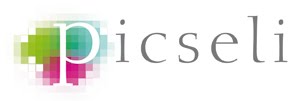So what is Good Content? In my opinion it is content that gives the user exactly what they are looking for. It is clear and concise, easy to understand, accessible and, from a more technical point of view, optimised for search engines. Writing content for your website is not the same as writing content for a company brochure or leaflet because people read differently on-line – they scan the content and don’t read each individual word. It needs to grab their attention and they must be able to quickly find the information they are looking for. Once you have their attention the chances are they will stay to read the detail.
Your competitors are only two clicks awayWhen you are searching for a supplier, how long does it take you to go from one to another? You search Google and click on the first result, decide straight away you don’t like it, so how many clicks does it take for you to get onto the next website? Two. One back to Google and one on the link below. People everywhere are doing this all the time – so what if they are searching for you? Your website must tell them what you do instantly, it should look professional and make it easy for them to get to the content they need. Your content must grab their attention and encourage them to read about you, which in turn will encourage them to get in touch, which leads to sales, which leads to profit...well, you get the idea! So how do you write good content?
Your target audience needs the answers...You need to determine who your target audience is and what they would like to achieve from visiting your site. Whether this is getting a phone number, looking for information, filling in a form or buying something. Once you have decided you can aim your content at the various audiences (as you may have more than one!) What will they be looking for? Is it easily accessible? Will they understand it? Will it make them purchase or get in touch?
..and they want them quicklyPeople will spend about 3 seconds scanning your website before reading anything. You have 3 seconds to grab their attention and entice them to read more. So don’t waste time using clever, meaningless headings, concentrate instead on easy to scan content. Our top tips for writing text are:
• Start and finish with the most important points (the postscript is the second most-read section of a letter!)
• Use sub-headings to highlight the point of each paragraph
• Use bold or highlighted text for key points
• Use lists to break up the text
• Stick to one idea for each paragraph so when users scan a paragraph there’s only one idea for them to grasp.
Don’t try to confuse your audiencePeople are bombarded by adverts everywhere they go and tend to ignore anything considered ‘marketing speak’. Keep your content objective and back it up with evidence where you can, for example facts and figures or customer testimonials.
Make sure that any acronyms are expanded at least in the first instance and that any specialist terms are explained, but make sure you don’t patronise your audience. It can be difficult to get the balance right as you may have a number of different audiences visiting your site, from those who will know every technical term in the book to those who are looking to learn.
Be FriendlyFriendly, clear and simple language is much easier to read and understand, and enables visitors to quickly scan text. Write as if you are talking to your visitors in person. Keep your content direct and to the point without adding too much “fluff” - make sure your visitors can tell exactly what you do! Keep lines and paragraphs short and use simple sentence structures.
What to do nowIt can sound a lot, but I promise you it is easier than it sounds!
In Part 1 we ended with a document containing a list of all of your pages with outline notes, bullets or paragraphs on what to include. Now expand (if you haven’t already) each bullet point or note into a sentence or small paragraph. If you already have paragraphs make sure that they only contain one point and separate out those that contain more. Don’t worry too much at this stage about the fluff, long sentences and language.
When you have your paragraphs - read through them. Now is the time to focus on removing the fluff, making sure sentences aren’t too long and revising the language. Imagine you are a visitor to your website and ask yourself:
• Do you know what this company does and what they can offer you?
• Is the point of each paragraph immediately clear?
• Do you need to read a sentence several times to understand it?
• Would you be happy to deal with these people?
When you are happy, find someone else to read through it and ask them the same questions.
You should now have your content written! Or at least know how to do it!
.jpg)